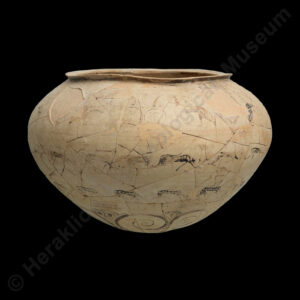
A decorative vase-painting style of the Archaic period (mid-7th to mid-6th c. BC), particularly popular in Asia Minor and Eastern Greece. It features wild goats, usually arranged in zones. The bodies are rendered in silhouette in dark paint, with details in clay-coloured lines or incised, while the heads of the animals and of the rare human figures are drawn in outline. This style appears to be a continuation of the early Orientalising tradition, at a time when the black-figure style was gradually prevailing in metropolitan Greece. The main workshops of the Wild Goat Style were once thought to be Rhodian, but laboratory analyses have shown that it probably originated in Miletus, while other workshops in Ionia have also been identified.